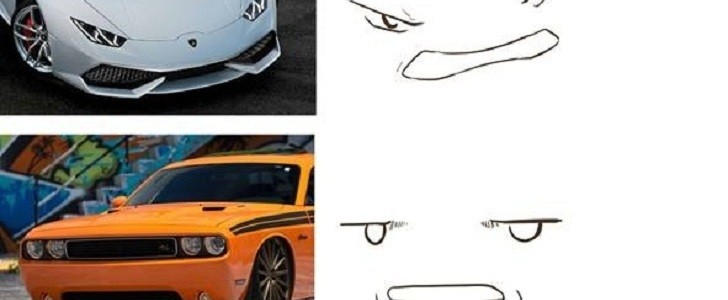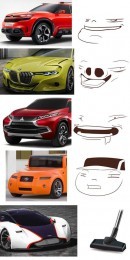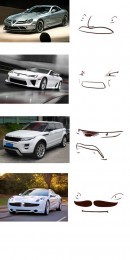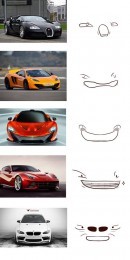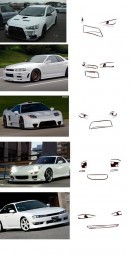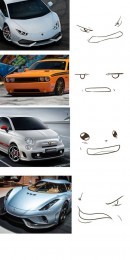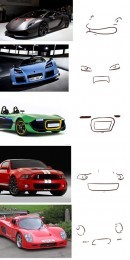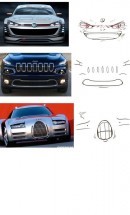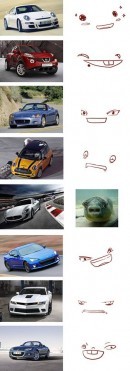Admit it already - you've always been watching cars and imagining facial expressions. Heck, you don't even have to be a petrolhead in order to do it. In fact, the time has come for us all to examine how our cars would look like if they had feelings and would decided to show them using their front fascias.
From the depths of the world wide web, we've brought you a massive gallery showcasing facial expressions for some of the popular contemporary cars.
As you can imagine, there's an entire section dedicated to supercars and hypercars and yes, Ferraris with smiling mouths are present. But these illustrations go way beyond that.
SUVs, concept cars and even an Abarth - none of these has escaped the visual psychological analysis. We still wish somebody has included the Angry Birds rear end of the 2017 Ford GT though.
Still, you can see the illustrations haven't required too much of an effort. After all, if you ask me, this only comes natural. Cars are designed by people so, one way or another, they are going to resemble their makers.
We heard some people wondering why Pixar, which has come up with the Cars series, hasn't followed this pathway. While Pixar did consider it, they came to the conclusion that placing the facial expression on the front of the car alone would create and artificial, snake-like appearance.
Instead, they chose to move the eyes over to the windshield, all with the aim of making their animated cars more inspiring for the target audience. Who is included in the target audience for such shenanigans? Well, aren't we all into cars here?
As you can imagine, there's an entire section dedicated to supercars and hypercars and yes, Ferraris with smiling mouths are present. But these illustrations go way beyond that.
SUVs, concept cars and even an Abarth - none of these has escaped the visual psychological analysis. We still wish somebody has included the Angry Birds rear end of the 2017 Ford GT though.
Still, you can see the illustrations haven't required too much of an effort. After all, if you ask me, this only comes natural. Cars are designed by people so, one way or another, they are going to resemble their makers.
Will Pixar steal the idea and use it in their next "Cars" animation?
The answer to the question above is "probably no."We heard some people wondering why Pixar, which has come up with the Cars series, hasn't followed this pathway. While Pixar did consider it, they came to the conclusion that placing the facial expression on the front of the car alone would create and artificial, snake-like appearance.
Instead, they chose to move the eyes over to the windshield, all with the aim of making their animated cars more inspiring for the target audience. Who is included in the target audience for such shenanigans? Well, aren't we all into cars here?
